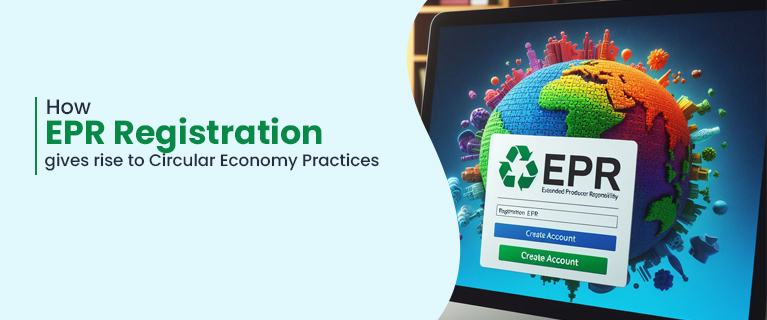How EPR Registration gives rise to Circular Economy Practices?
In the quest for sustainable practices and responsible resource management, Extended Producer Responsibility (EPR) Certification has emerged as a transformative force, particularly in shaping circular economy practices. This blog explores how EPR registration serves as a catalyst for the rise of circular economy practices, revolutionizing the way we approach resource consumption, waste generation, and the life cycle of products.
Understanding EPR Registration:
EPR fundamentally shifts the responsibility for a product's life cycle from consumers and local authorities to the producers and manufacturers. This includes not only the creation and sale of products but also their eventual disposal and recycling. EPR registration, a mandatory process for businesses, formalizes this commitment, making producers accountable for the environmental impact of their products.
Closing the Loop: EPR and Circular Economy
1. Designing for Durability and Recyclability:
EPR registration prompts producers to rethink their product design strategies. To thrive in a circular economy, products must be durable, easily repairable, and designed with recycling in mind. EPR encourages producers to create goods that can be disassembled, with components that are recyclable or reusable. This shift from a linear to a circular design approach ensures products have a longer life span and minimize waste.
Read also this -: Revolutionizing E-Waste Management Through EPR Certification2. Recycling Targets and Innovation:
EPR Certification mandates the achievement of specific recycling targets, pushing companies to invest in innovative recycling technologies. Producers are incentivized to develop efficient methods for collecting, sorting, and recycling materials from their products. This fosters a culture of innovation in waste management, creating new opportunities for recycling industries and promoting the development of a robust circular economy infrastructure.
3. Resource Conservation:
EPR registration contributes significantly to the conservation of valuable resources. Instead of the traditional linear model where resources are extracted, used, and discarded, EPR fosters a circular approach. Materials recovered through recycling processes are reintegrated into the production cycle, reducing the need for virgin resources. This resource conservation not only mitigates environmental impact but also addresses concerns related to resource scarcity and depletion.
EPR Registration in Action: Real-world Examples
1. Electronics Industry:
In the electronics sector, EPR registration has led to a paradigm shift. Manufacturers are now designing products with modular components, facilitating easier repair and recycling. As a result, electronic waste is increasingly being diverted from landfills, and valuable materials are being reclaimed for use in new devices.
2. Packaging Industry:
EPR Certification has also influenced the packaging industry. Companies are exploring sustainable and eco-friendly packaging solutions, focusing on materials that are easily recyclable or biodegradable. This not only reduces the environmental impact of packaging but also aligns with circular economy principles.
Read also this -: Communicating EPR Registration Efforts to ConsumersChallenges and Future Prospects:
While EPR Certification has brought about significant positive changes, challenges remain. Producers may face initial resistance due to increased costs associated with redesigning products and establishing efficient recycling processes. However, these challenges are integral to the evolution towards a circular economy, and the long-term benefits far outweigh the initial hurdles.
Conclusion:
In conclusion, EPR registration stands as a powerful driver in the journey towards circular economy practices. By instilling a sense of responsibility in producers and fostering innovation in waste management, EPR is instrumental in reshaping our approach to consumption and waste. As more industries embrace EPR principles, the vision of a circular economy—one where resources are conserved, waste is minimized, and products are designed for longevity—moves closer to becoming a global reality.




Comments
Post a Comment